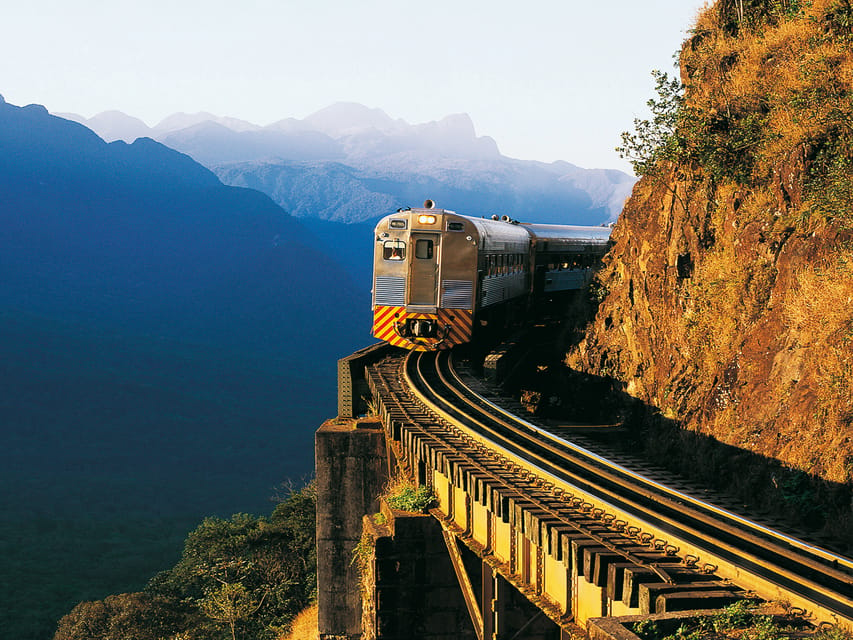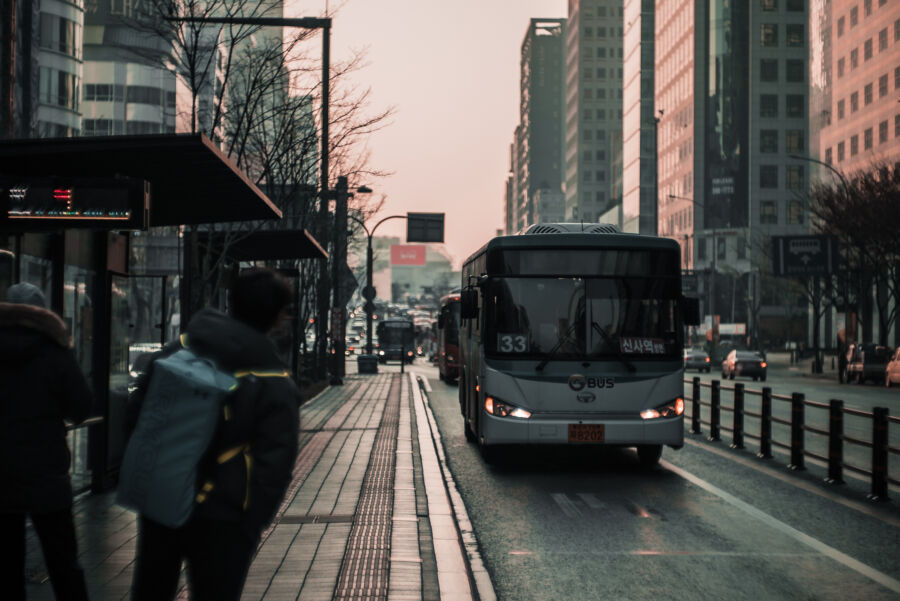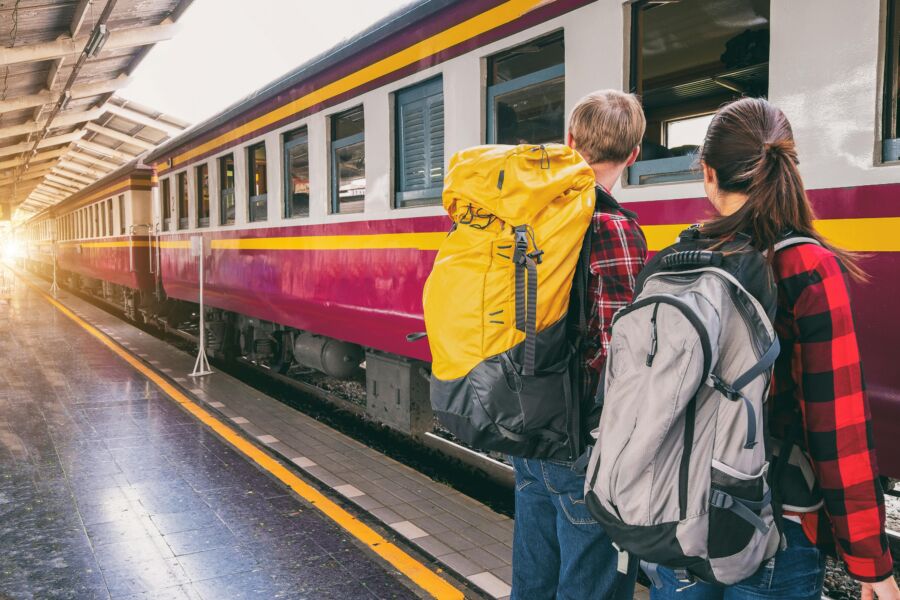
Bus vs Train Travel: What’s Best for You?
After spending countless hours traversing continents by both rail and road, I’ve developed a deep understanding of when each mode of transport truly shines. Let me guide you through making the perfect choice for your next journey, whether you’re planning a quick weekend getaway or embarking on an extended adventure.
Contents
- At a Glance: Key Comparison
- The Journey Experience
- Cost Considerations
- Train Travel Economics (2025 Update)
- Bus Travel Value (2025 Insights)
- Time and Schedule Flexibility
- Train Advantages
- Bus Network Benefits
- Practical Travel Tips
- Environmental Impact & Economic Benefits
- Making Your Choice
- Choose Train When:
- Choose Bus When:
- Looking Ahead: Future Transportation Travel Trends
- Smart Booking Strategies
- Final Thoughts
- More Travel Guides
At a Glance: Key Comparison
| Feature | Train Travel | Bus Travel |
|---|---|---|
| Average Cost (300mi) | $102-180 | $35-50 |
| Booking Sweet Spot | 2-3 months ahead | 2-4 weeks ahead |
| Luggage Allowance | 2-3 bags free | 1 bag free + fees |
| WiFi Availability | Major routes only | Most routes |
| Legroom (inches) | 39-41 | 31-36 |
| Best For | Major cities | Rural destinations |
The Journey Experience

Imagine settling into your seat as the landscape rolls past your window. On a train, you’ll have the freedom to wander between cars, perhaps enjoying a meal in the dining car while watching the world go by. The gentle sway of the rails creates an almost meditative experience that many travelers, myself included, find deeply appealing.
Bus travel, while more modest in its amenities, has evolved significantly. Modern coaches offer surprisingly comfortable seating, entertainment systems, and often more frequent departure options. During my recent cross-country expedition, I was impressed by how luxury bus services have elevated the experience with features like expanded legroom and enhanced onboard services.
Cost Considerations

Here’s what experienced travelers should know about pricing:
Train Travel Economics (2025 Update)

The rail system operates on a tiered pricing model that rewards early planners. Based on the latest 2024-2025 data, major routes start around $102 for advance bookings, with prices varying significantly based on demand and timing. First-class upgrades typically add 65-85% to your base fare, including meals and lounge access.
💡 Smart Train Booking Tips:
- Book 3+ months ahead for best rates
- Check midweek travel for lower fares
- Consider regional rail passes for multiple trips
- Look for seasonal promotions during off-peak times
Bus Travel Value (2025 Insights)

Bus services maintain consistent pricing, with many intercity routes costing $50 or less. The rising competition in the bus sector has improved amenities while maintaining budget-friendly fares. Premium and luxury bus services have emerged, offering enhanced comfort at prices still well below train fares.
🚌 Bus Travel Money-Saving Strategies:
- Compare multiple carriers for best rates
- Book 2-4 weeks ahead for optimal pricing
- Consider overnight buses for accommodation savings
- Look for student and senior discounts
- Use bus aggregator sites for best deals
Time and Schedule Flexibility

The transportation landscape of 2025 offers some interesting contrasts when it comes to scheduling:
Train Advantages
Trains excel in weather resilience and typically maintain better on-time performance during challenging conditions. Major routes operate with 92% punctuality, though this drops to 84% during winter months. The dedicated rail network means you’re less likely to encounter unexpected delays from traffic.
Bus Network Benefits
Modern bus networks have adapted to provide impressive coverage. With over 2,800 destinations in North America alone, buses often serve routes trains can’t reach. Multiple daily departures mean you’re never far from the next available service.
Practical Travel Tips

Rather than overwhelm you with bullet points, let me share some strategic advice:
For business travelers, trains offer the ideal mobile office environment. The stable ride and generous table space make work possible and pleasant. I’ve completed entire presentations while crossing countries by rail.
Budget travelers should consider this hybrid approach: Use buses for shorter trips under three hours where the comfort differential is less noticeable, then opt for trains on longer journeys where the extra space and amenities justify the higher cost.
Environmental Impact & Economic Benefits

Modern transportation choices increasingly reflect our commitment to sustainability and economic development. According to recent 2024 studies, trains emit approximately 177 grams of CO2 per passenger mile, while buses produce about 299 grams. However, both options significantly outperform private car travel in terms of environmental impact.
What’s particularly interesting is the economic impact of public transit choices. Recent data shows 87% of public transit trips directly contribute to the local economy. The demographic breakdown is enlightening as well – 71% of transit riders are employed professionals. In comparison, 7% are students, highlighting the vital role these services play in supporting both the workforce and education sectors.
🌟 Key Transport Impact Statistics (2024-2025):
- CO2 per passenger mile (train): 177 grams
- CO2 per passenger mile (bus): 299 grams
- Economic impact trips: 87%
- Employed riders: 71%
- Student riders: 7%
Making Your Choice

Consider your journey through these lenses:
Choose Train When:
The journey is between major cities, and you value the ability to move around freely during travel. I recommend rail for overnight journeys – there’s nothing quite like drifting off to sleep in a dedicated sleeper car.
Choose Bus When:
You’re heading to smaller towns or seeking maximum schedule flexibility. Bus services truly shine for regional exploration, offering unmatched access to local destinations and often dropping you in town centers.
Looking Ahead: Future Transportation Travel Trends

The future of ground travel is evolving rapidly, with both modes embracing technology and sustainability. The commuter rail and bus services market is experiencing significant growth, driven by increasing demand for sustainable transportation options. Here’s what’s shaping the future of ground travel:
🚆 Train Innovation Highlights:
- Enhanced digital integration with real-time tracking
- Improved sustainable energy solutions
- Smart station technologies
- Automated booking systems with AI-powered pricing
🚌 Bus Service Advancements:
- Electric and hybrid fleet expansions
- Enhanced onboard connectivity
- Mobile-first booking platforms
- Improved route optimization technology
💫 Industry Growth Factors:
- Rising focus on sustainable transport
- Increasing urban population
- Growing preference for cost-effective travel
- Enhanced integration with other transit modes
Smart Booking Strategies

Let me share a booking secret that’s saved me hundreds: Compare multi-leg journeys. Sometimes, combining a short bus ride with a longer train journey can offer significant savings while maximizing comfort for the longest stretch.
For 2025 bookings, consider these timing strategies:
| Booking Window | Train Discount | Bus Discount |
|---|---|---|
| 3+ months ahead | 45-60% off | 10-20% off |
| 1-2 months ahead | 25-35% off | 15-25% off |
| 2-4 weeks ahead | 10-15% off | 20-35% off |
| Last minute | 0-5% off | 15-40% off |
Remember, these are general guidelines – special promotions can dramatically alter these numbers in your favor.
Final Thoughts
After years of experience with both modes of travel, I’ve learned that the “best” choice often isn’t about absolutes but about matching the transport to your specific journey needs. Whether you prioritize comfort, cost, or convenience, today’s ground transportation options offer something for every type of traveler.
Consider your priorities, consult the comparison tables above, and confidently make your choice. Whichever mode you select, you’re in for an adventure.
Pro Tip: Sign up for both rail and bus service newsletters – the special offers can be substantial, and you’ll want options for different types of journeys throughout the year.



